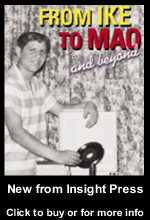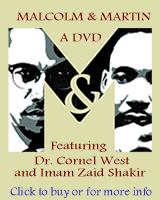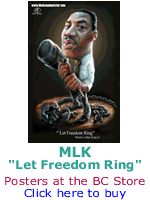
|
|||||||||||||||||||||
 |
|||||||||||||||||||||
 |
|||||||||||||||||||||
 |
|||||||||||||||||||||
 |
|
|
Archivist and historian par excellent, Mamye Clayton, passed away last week and left the world a treasure beyond measure. A former librarian for both USC and UCLA, Dr. Clayton established and developed African American historical archives at a time when others thought black history wasn’t important. Let me rephrase that; when other people thought that black history was non-existent. Outside of Carter G. Woodson and Arthur Schomberg, there weren’t any (largely) known archives of colored history, Negro history, black history, African American history—whatever you want to call the various machinations of identity that Africans descendents born in America have struggled with. Knowledge of self is essential to understanding of ones self. It’s one thing to see black Americana in the abstract—in singular presentations exclusive to any particular space and time. But it’s another thing to see the dynamicity of an awesome collection that spans space and time. That’s why visiting museums and seeing the wonders of history can be so overwhelming at times. A collection foments one’s understanding of the totality of a people’s contribution that singular works cannot encompass. If you never got to see Mayme Clayton’s black history archives that spanned literature, art, movies, plays, records, posters, memorabilia, racial collectibles…anything black (and when I say anything black, I mean anything having to do with black identity, black autobiography, black imagery, black culture that spans four centuries (I didn’t say four decades), meaning 1700s, 1800s, 1900s, 2000s, then you can’t really understand Mayme Clayton’s contribution. But if you ever saw her archives, you know she was the West Coast’s Arthur Schomberg. Black historiographers, true culturalists that document and trace the evolution of blackness in America, are a rare breed. People put together a few “knick-knacks” and call themselves collectors or historians. But when it comes to black history, which is considered “Racial Americana,” much of it is buried with America’s troubled past. The Schomberg collection, that started as a part of the “Negro Division” of the 135th St. Public Library in Harlem and was named for its curator, Arthur Schomberg, in 1940, is the world’s largest collection of cultural memorabilia of the African Diaspora, with over five million items. For the entirety of its existence, the Schomberg collection has been on public display. Dr. Mayme Clayton was the most unassuming lady you could ever meet. Quiet, with a penetrating gaze, you could literally see her analyzing everything in the context of culture and cultural contribution. What does it mean in the long term scheme of things? How will it be seen, not tomorrow, but 100 years from now? And where will people go to find it? She had the answer; they would come to her—her collection of documents, primary source documents. Dr. Mayme Clayton started her collection in 1957 as the Law Librarian at UCLA, where she was a founding member of the Afro-American Studies Center library. Founding the Western States Black Research and Education Center in 1976, over the next 30 years, she amassed the world’s second largest collection of African/African American memorabilia, with an estimated two million items—including 20,000 rare and out of print books, 10,000 rare recordings and sheet music, over 75,000 rare photos and a vast collection of uncounted primary source documents that, with the exception of a few annual shows, have never been on public display.
Between slavery, redemption, segregation and colorblindness, it didn’t leave a lot for black historians to document, and white historians had only told a fraction of the story. To unearth real “black” history was too painful for us and too embarrassing for them, so African Americans were often encouraged to put their past behind them and “don’t look back.” The truth is never found that way, and America has never wanted the Negro to find nor understand truth. An example of a covered up past is the history of the Massive Resistance movement that stalled the implementation of Brown versus the Board of Education for a full ten years. Do you know there are less than a half-dozen books written about the second greatest cultural upheaval in America’s history? The nation’s greatest cultural upheaval was the battle to save (or end) slavery that we now call the Civil War. Over 700 books have been written about the Civil War, but less than a half dozen about the upheaval to defend (or end) segregation. Why? Because it is an ugly past that whites never wanted to revisit. Historiographers have a way of pulling back the covers of history, past the lies, past the half-lies, past the revisions of history, to get to the truth. That’s what an archival collection means to a people, a pathway to the truth about one’s self. When I wrote a history of the state of black equality in America, I was seeking truth as to why black America had not progressed more than we had. Were we self-hating? Were we lazy? Were we brainwashed? Were we just stupid? The trail was fuzzy and the history according to the other man just didn’t add up. It needed some primary source documents. I needed some archival photos. I needed some help connecting the dots. I had heard about Mayme Clayton’s collection for years, but I had never seen it. Dr. Clayton was a regular attendee of my Urban Issues Forum (until she got sick), so I went to her and asked her, could I see her photo archives? She said, “Sure,” and I made an appointment to go by there—expecting it to be at a college, or a library, or a commercial building. She said, “No, you’re coming to my home.” I thought, Okay, how large can it be, right. I blocked two hours. I got to her modest home, but I didn’t see any collection. She said, “Come with me.” We went out of her house (past the biggest dog I’d seen in a long time), and into her garage, where I thought I’d died and gone to “Black Heaven” (not to be confused with Ni**er Heaven). There I saw more books, posters and film trays than were in most high school (and small college) libraries. And in front of me was an eight foot table with six long boxes of pictures. I just sat on the floor and pored through the boxes of photos that I had never seen in my life (and I thought I had seen most of the archival footage of the significant movements of the past 150 years). I was flabbergasted. Here was one of the most significant black history collections, in the garage of a little brilliant old lady. My two hour window turned into five four hour visits. Most of the archival photos in my last book came from the Mayme A. Clayton collection. Thank God, the Mayme A. Clayton collection found a permanent home, finalized the day before she died. It’s housed at 4130 Overland Ave. in a former Court house building donated by the city of Culver City and the County of Los Angeles. Probably the best use of justice that building has ever seen. In lieu of flowers, the family has asked that donations be sent to the Mayme A. Clayton Library and Cultural Center. That’s the least we can do for a woman who spent the last 40 years trying to save a treasure of a collection that nobody thought was worth saving until the end of her life. Mayme Clayton was our Arthur Schomberg. Pay her the ultimate tribute, by going to see her collection—now that it’s finally on public display, we hope, forever. Anthony Asadullah Samad is a national columnist, managing director of the Urban Issues Forum and author of 50 Years After Brown: The State of Black Equality In America. He can be reached at AnthonySamad.com. |
|
| Home | |
Your comments are always welcome. Visit the Contact Us page to send e-Mail or Feedback or Click here to send e-Mail to [email protected] e-Mail re-print notice
If you send us an e-Mail message we may publish all or part of it, unless you tell us it is not for publication. You may also request that we withhold your name. Thank you very much for your readership. |
|
| October 26, 2006 Issue 203 |
||||||||||||||
|
||||||||||||||
|
||||||||||||||
| Printer Friendly Version in resizeable plain text format | ||||||||||||||
 |
||||||||||||||
 |
||||||||||||||
 |
||||||||||||||
 |
||||||||||||||
| |
||||||||||||||
| |
||||||||||||||





























